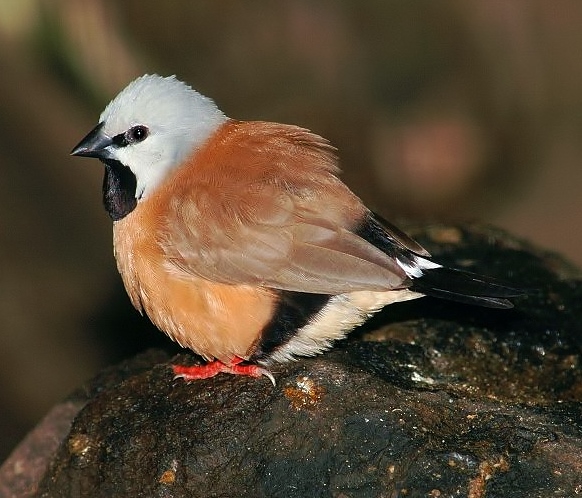 |
| Photo by Vladimír Motyčka (BioLib) |
Common name:
black-throated finch (en); diamante-de-garganta-preta (pt); diamant à bavette (fr); diamante gorjinegro (es); gürtelgrasfunk (de)
Taxonomy:
Order Passeriformes
Family Estrildidae
Range:
This species is endemic to Queensland, Australia, where it is currently found on the Cape York Peninsula. In the past its range extended southwards into northern New South Wales.
Size:
These birds are 10-12 cm long and weigh about 15 g.
Habitat:
The black-throated finch is found in dry, grassy savannas and open forests dominated by eucalypts, paperbarks or acacias, and also uses scrublands, pastures and arable land.
Diet:
They mainly feed on the seeds of various grasses and herbs, such as such as Urochloa mosambicensis, Digitaria, Melinis repens, Chloris inflata, Dactyloctenium, Eremochloa, Paspalidium and Setaria. They also take some spiders, ants and termite alates.
Breeding:
Black-throated finches can breed all year round. They breed in colonies and the nest is built by both sexes, consisting of a round structure woven from dried grasses with tube-like entrance. It is typically placed in a fork in a tree or scrub, about 5 m above the ground. There the female lays 3-9 matte white eggs, which are incubated for 12-15 days. The chicks are fed by both parents and fledge 21-22 days after hatching, but only become fully independent 3 weeks later. Each pair raises 1-2 broods per year.
Conservation:
IUCN status – LC (Least Concern)
This species has a large breeding range and is described as fairly common or locally common, but less common in the south of its range. The population is suspected to be in decline at a slow rate, owing to the clearance and degradation of its habitats, mainly due to the spread and intensification of pastoralism, changes in fire regime and increases in the density of native woody weeds in grassy savannas. Despite this, the black-throated finch in nor considered threatened at present.







